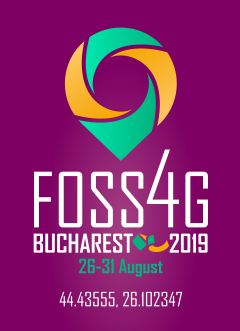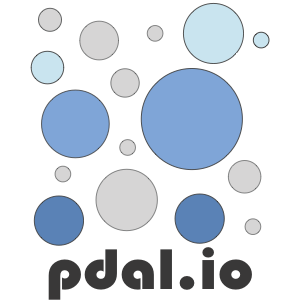Exploiting PDAL and Entwine in the wild
Dr Adam Steer
Spatialised
@adamdsteer
Who am I?
Freelance geospatial consultant: Spatialised
Organising committee for FOSS4G SotM Oceania 2018 and 2019
OSGeo charter member, marketing committee, OGC representative
Field scientist turned data wrangler
Sea ice elevation and draft modelled with photogrammetry and upward looking sonar. Interact with me!
What do I do now with PDAL and Entwine?
Analysis
Processing
This talk is here:
https://adamsteer.github.io/talks/foss4g2019.pdal.entwine/
...play with the interactive bits if you like! (unfortunately, the webGL used will not work in the Safari web browser)
PDAL and Entwine in Hydrography
def xyzcoverage(inputfile):
"""
Provide a file name with extension:
- xyz
...extract a tight polygon around the XY points in the file
and return a GeoJSON polygon
"""
pipeline = {
"pipeline": [
{
"type": "readers.text",
"header": "X\tY\tZ\tFlightllineID\tIntensity",
"spatialreference": "EPSG:4326",
"filename": inputfile
},
{
"type": "filters.hexbin",
"threshold": 1
}
]
}
def xyzdensity(inputfile):
"""
.xyz files (ascii point clouds or grids)
"""
pointcoverage = getpointcoverage.getpointcoverage(inputfile)
pointcoverage = shape(json.loads(pointcoverage))
# get the area of the coverage. first convert from WGS84 to utm
projstring = geotransforms.guessutm(pointcoverage)
utmcoverage = geotransforms.latlontoutm(pointcoverage, projstring)
covered = utmcoverage.area
npoints = mapcount(inputfile)
meandensity = covered/npoints
return json.dumps({
'meandensity': meandensity,
'area': covered,
'npoints': npoints
})
https://github/frontiersi/qa4mbes-data-pipeline/blob/master/notebooks/
{
"pipeline":[
{
"type" : "readers.text",
"filename" : "inputfile.txt",
"separator" : ",",
"header" : "X,Y,Z",
"skip": 1
},
{
"type" : "filters.reprojection",
"in_srs":"EPSG:4326",
"out_srs":"EPSG:3577"
},
{
"type": "filters.ferry",
"dimensions": "=>Classification, =>PointSourceId"
},
{
"type": "filters.assign",
"assignment": "PointSourceId[:]=1, Classification[:]=2"
},
{
"type": "filters.outlier"
},
{
"type":"filters.transformation",
"matrix": "1 0 0 0 0 1 0 0 0 0 -1 0 0 0 0 1"
},
{
"type":"filters.colorinterp",
"minimum" : -8100,
"maximum" : 0,
"ramp" : "blue_hue",
"dimension":"Z"
},
{
"type":"writers.las",
"filename":"outfile.laz",
"minor_version": 4,
"a_srs": "EPSG:3577"
}
]
}
#!/bin/bash
path=$1
table=$2
echo $table
for filename in $path/*.laz; do
echo $filename
thefile=$(basename $filename .laz)
echo $thefile
bounds=$(pdal info --boundary $filename | jq '.boundary.boundary')
bounds=$(echo $bounds | tr -d \")
pointcount=$(pdal info --metadata $filename | jq '.metadata.count' )
echo $pointcount
thedepth=$(pdal info --stats $filename | jq '.stats.statistic[2].average' )
echo $thedepth
#allthejson=$(pdal info --summary $filename )
psql -U adam -h localhost -p 5432 -d bathymetryindex -c \
"insert into $table (filename, boundingbox, npoints, meandepth )
values ('$thefile', ST_GeomFromText('$bounds'), $pointcount, $thedepth);"
done
Workflow
Read ASCII from a THREDDS server
Reproject, invert Z, LAZ-ify
Collect boundaries and postGIS-ify
Entwine-ify
Do stuff...
Indian ocean sea floor data collected during MH370 search phase 1 and 2. Interact with me!
{
"pipeline": [
{
"type": "readers.ept",
"filename": "https://act-2015-rgb.s3.amazonaws.com/",
"bounds": “([-2639580, -2635580], [-4137200,-4142200])"
},
{
"type":"writers.gdal",
"gdalopts":"t_srs=EPSG:3577",
“resolution":20,
“filename”:"diamantina-dsm.tiff",
"output_type":"idw"
}
]
}
Seafloor DEM in QGIS2threeJS made from an Entwine index using PDAL
Making landscape-scales easy
The Australian Capital Territory. 1600 square kilometres, 29.4 billion points. Interact with me!
{
"pipeline": [
{
"type": "readers.ept",
"filename": "http://act-2015-rgb.s3.amazonaws.com/“,
"bounds": "([692738, 692967], [6092255,6092562])"
},
{
“type”:”filters.hag"
},
{
"type": "filters.ferry",
"dimensions": "HeightAboveGround=>Z"
},
{
“type”:”filters.crop”,
"polygon" : "POLYGON((692809.631984224 6092391.60313353,...,692809.631984224 6092391.60313353))"
},
"cropped-data-from-entwine.laz"
]
}
National Museum of Australia clipped from Entwine using PDAL
Workflow
Colourize
Entwine-ify
Do stuff...
The lower Murray Darling Basin. 8000 square kilometres, 30.7 billion points. Interact with me!
{
"pipeline": [
{
"type":"readers.ept",
"filename":"https://lower-mdb-2013-rgb.s3.amazonaws.com/",
"bounds":"([566655, 567655], [6254307,6255307])"
},
{
"type":"filters.python",
"script":"treepercentage.py",
"function":"treepercentage",
"module":"anything",
"pdalargs":"{\"cellsize\":10,
\"spatialreference\":\"EPSG:28354\",
\"outputfile\":\"treeness-new.tiff\"}"
},
{
"type":"filters.range",
"limits":"Classification[2:2]"
},
{
"type":"writers.gdal",
"gdalopts":"t_srs=EPSG:28355",
"resolution":10,
"filename":"trees-dem.tiff",
"output_type":"idw"
}
]
}
Treeness in the lower Murray Darling basin
Workflow
Colourize
Entwine-ify
Do stuff!
Scale mixing and tiny airplanes
1.12 billion TLS points georeferenced using PDAL and a coincident ALS survey
Workflow
Find coregistration points, generate transformation matrix, apply trasformation matrix
Entwine-ify
Do stuff...
A very tiny airplane
Mt Coree's wind wall. 125.9 million points, 264 square metres. Interact with me!
Practical application - data alignment and change detection
Workflow
Classify ground in RPA data
Generate transform with ICP
Apply transform
Entwine-ify
Do stuff...
Open by default


Thank you!
This talk
https://adamsteer.github.io/talks/foss4g2019.pdal.entwine/
Longer reads
https://www.spatialised.net/category/pdal/


